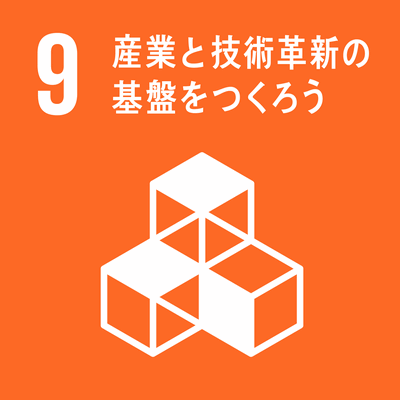シラバス表示
シラバスの詳細な内容を表示します。
→ 閉じる(シラバスの一覧にもどる)
科目の基本情報
| 開講年度 | 2024 年度 | |
|---|---|---|
| 開講区分 | 工学研究科(博士後期課程)材料科学専攻 | |
| 受講対象学生 |
大学院(博士課程・博士後期課程) : 1年次 |
|
| 選択・必修 | ||
| 授業科目名 | 光情報化学演習 | |
| ひかりじょうほうかがくえんしゅう | ||
| Seminar in Photochemistry for Information Processing | ||
| 単位数 | 2 単位 | |
| ナンバリングコード | EN-PHCH-7
|
|
| 開放科目 | 非開放科目 | |
| 開講学期 |
通年 |
|
| 開講時間 |
木曜日 9, 10時限 |
|
| 授業形態 |
対面授業 * 状況により変更される可能性があるので定期的に確認して下さい
「オンライン授業」・・・オンライン会議ツール等を利用して実施する同時双方向型の授業 |
|
| 開講場所 | 研究室および総合研究棟I 2階セミナー室 | |
| 担当教員 | 小塩 明(工学研究科材料科学専攻) | |
| KOSHIO, Akira | ||
| SDGsの目標 |
|
|
| 連絡事項 | * 状況により変更される可能性があるので定期的に確認して下さい |
|
学修の目的と方法
| 授業の概要 | ナノカーボン(フラーレン、カーボンナノチューブ、グラフェンなど)をはじめとして、さまざまなナノ物質(ナノ粒子、ナノワイヤー、ナノシートなど)の作製方法ならびに分析・評価方法、それらの物性と材料応用などを最近の進展を論文をもとに演習する。 (Course description/outline) This course deals recent progress in formation methods, analysis and evaluation methods of various nanomaterials (nanoparticles, nanowires, nanosheets, etc.) including nanocarbons (fullerene, carbon nanotubes, graphene, etc.) and their physical properties and material applications. |
|---|---|
| 学修の目的 | ナノ物質の様々な作製方法や分析・評価方法に関する知識を習得する。また、ナノ物質の分析・評価あるいは、デバイスやセンサーなど様々な材料への応⽤に関する最新の研究例・実⽤例を知識として習得する。 (Learning objectives) The goal of this course is to obtain knowledge about various manufacturing methods and analysis / evaluation methods of nanomaterials. In addition, students will acquire the latest research and practical examples of analysis and evaluation of nanomaterials or application to various materials such as devices and sensors. |
| 学修の到達目標 | ナノ物質の分析・評価方法とデバイスやセンサーなど様々な材料への応⽤に関する最新の研究例・実⽤例を知識として習得するとともに、この分野で主体的研究ができるようになる。 (Achievements) Students will be able to acquire knowledge of the latest research and practical examples of analysis and evaluation methods for nanomaterials and their application to various materials such as devices and sensors, and will be able to carry out independent research in this field. |
| ディプロマ・ポリシー |
|
| 成績評価方法と基準 | 演習での質疑応答によって評価する。 (Grading policies and criteria) Evaluate by the quality of the question-and-answer in the exercise. |
| 授業の方法 | 演習 |
| 授業の特徴 |
問題自己設定型PBL 教員と学生のやり取りは日本語でも、英語による論文や教材の講読を含んだ授業 |
| 授業アンケート結果を受けての改善点 | ナノ材料の作製法や分析に関する最新の技術、話題を盛り込み、学生の理解度を勘案しながら授業を進める。また、自分の研究に役立つ情報のつかみ方など将来役に立つ考え方を含めて演習する。 (Ideas for improving classes) This exercise incorporates the latest technologies and topics related to the fabrication method and analysis of nanomaterials, and the lessons can be advanced while considering the degree of understanding of students. Also, practice including ideas that will be useful in the future, such as how to grasp information that is useful for your own research. |
| 教科書 | |
| 参考書 | 授業中に紹介する。 (Reference materials) Introduce during this class. |
| オフィスアワー | 随時、総合研究棟Ⅰ205室(事前にメールで確認すること) (Office hour) Open at any time, Room 205 in the General Research Building I Please make an appointment by e-mail in advance. |
| 受講要件 | 特になし (Prerequisites) N/A |
| 予め履修が望ましい科目 | 光情報化学特論 (Courses encouraged to take in advance) Photochemical Information |
| 発展科目 | |
| その他 |
英語対応授業である。 (This course is English-supported.) |
授業計画
| MoodleのコースURL |
|---|
| キーワード | 材料化学、ナノカーボン、ナノ物質(ナノチューブ、ナノファイバー、ナノ粒子、ナノワイヤー)、デバイス、センサー |
|---|---|
| Key Word(s) | Materials Chemistry, Nanocarbons, Nanomaterials, Nanotubes, Nanofibers, Nanoparticles, Nanowires, Devices, Sensors |
| 学修内容 | The Journal of Physical Chemistry, Nano Letters, Nature Materials, ACS Nanoなどの専門誌に掲載された最新のナノ物質に関する文献ならびにそれらの参考論文を精読し、内容について議論することで自身の研究推進に役立てる。 (Course contents) Students carefully read the latest nanomaterial literature published on specialized journals such as The Journal of Physical Chemistry, Nano Letters, Nature Materials and ACS Nano, and their references. And they promote their research by discussing the content with the staff. |
| 事前・事後学修の内容 | |
| 事前学修の時間:120分/回 事後学修の時間:120分/回 |
